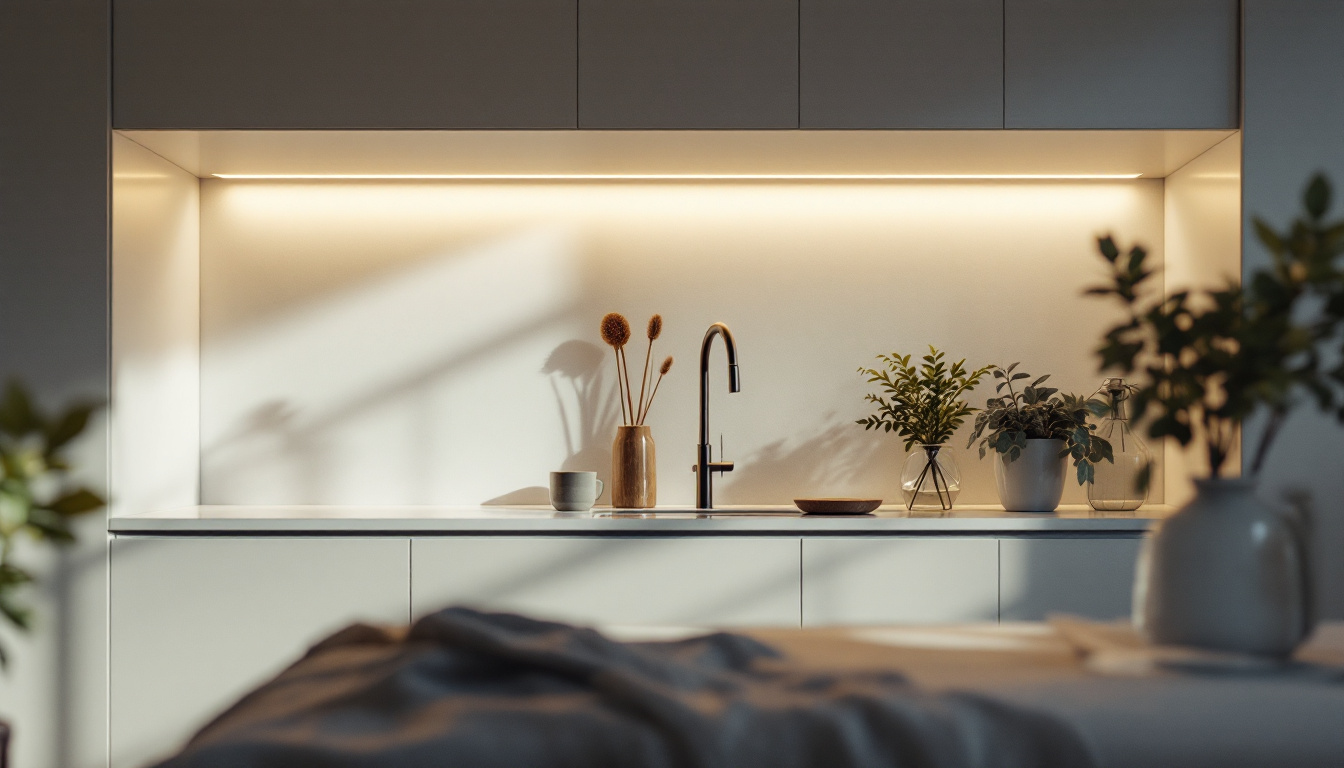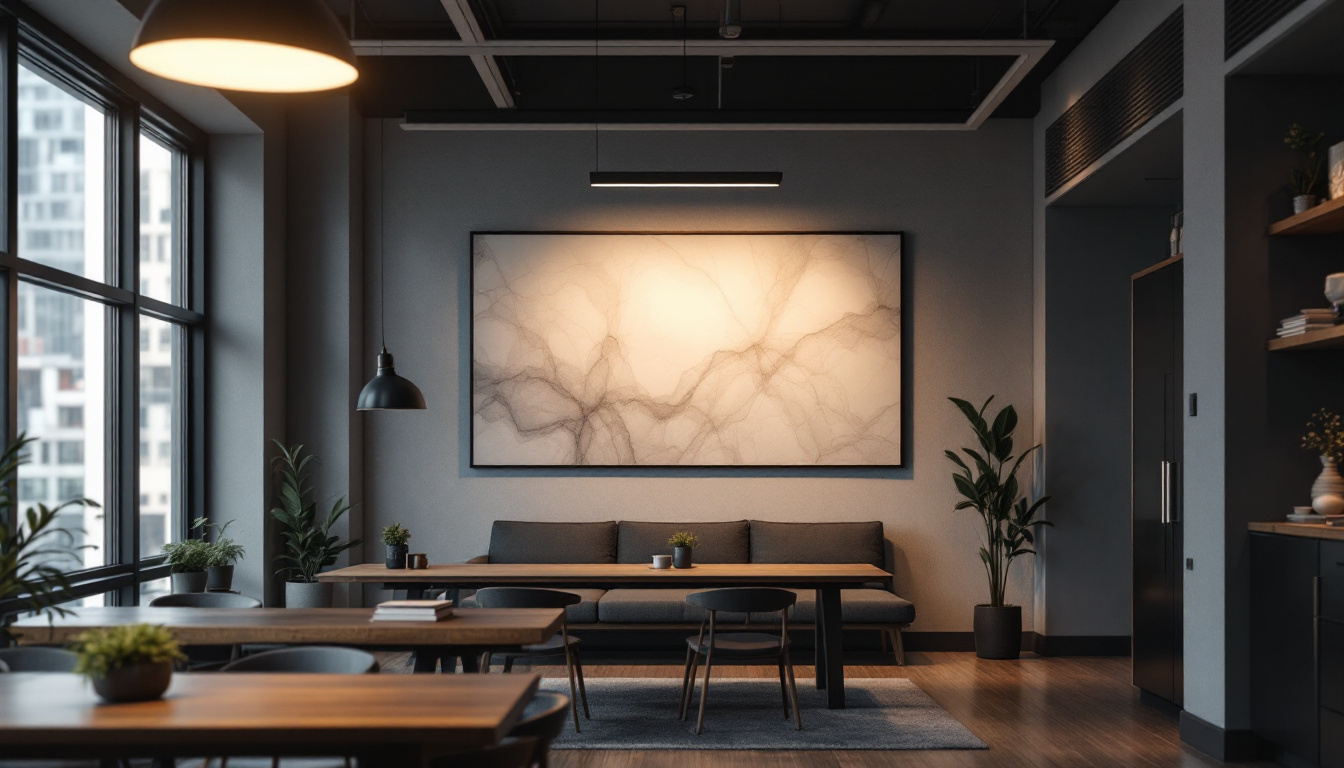
Lighting is often one of the most overlooked aspects of interior design, yet it plays a crucial role in enhancing the functionality and aesthetic appeal of a space. For lighting contractors, understanding the nuances of lighting design is essential for delivering successful projects. A well-lit cabinet can transform a dull kitchen or living area into an inviting and functional space. The right lighting not only illuminates but also sets the tone of the environment, influencing how people feel and interact within that space. From the warm glow of a pendant light over a dining table to the bright, focused light of a reading lamp, each choice contributes to the overall atmosphere.
Moreover, improper lighting can lead to costly mistakes that not only affect the quality of the project but also the satisfaction of the client. By focusing on the right techniques and strategies, contractors can avoid these pitfalls and create stunning lighting solutions that meet their clients’ needs. Effective lighting design also considers energy efficiency and sustainability, which are increasingly important to modern homeowners. Incorporating energy-efficient bulbs and smart lighting systems can not only reduce energy costs but also appeal to environmentally conscious clients who prioritize sustainable living practices.
When planning a lighting project, it’s important to understand the different types of lighting available. Ambient, task, and accent lighting each serve unique purposes and can be combined to create a cohesive lighting plan. Ambient lighting provides overall illumination, task lighting focuses on specific areas for functional use, and accent lighting highlights particular features or decor. This layered approach to lighting ensures that every corner of a room is thoughtfully illuminated, enhancing both its beauty and practicality.
In the context of cabinets, integrating these types of lighting can enhance visibility and aesthetics. For instance, under-cabinet lights can serve as task lighting for countertops, while LED strips can be used to accentuate the cabinet design. Additionally, incorporating dimmable options allows homeowners to adjust the brightness according to their needs, whether they are hosting a dinner party or enjoying a quiet evening at home. The flexibility of lighting design can also be utilized to create focal points, drawing attention to artwork, architectural features, or even a well-organized pantry.
Even seasoned contractors can fall prey to common mistakes when it comes to lighting. One of the most frequent errors is underestimating the importance of scale and proportion. A small fixture in a large space can feel lost, while an oversized fixture can overwhelm a smaller area. This balance is crucial, as it not only affects the visual appeal but also the functionality of the lighting. Proper placement and sizing can enhance the overall design, ensuring that the lighting complements the architecture and decor rather than competing with it.
Another mistake is neglecting to consider the color temperature of the lighting. Different bulbs emit varying hues, which can dramatically affect the mood and functionality of a space. Warm tones create a cozy atmosphere, while cooler tones can make a space feel more energetic. Additionally, the choice of lighting can influence how colors appear in a room, which is particularly important for spaces like kitchens and bathrooms where color accuracy is essential. By carefully selecting the right color temperature and understanding its impact, contractors can help clients achieve their desired ambiance while enhancing the overall design of their space.
A well-thought-out lighting layout is essential for achieving the desired effect in any project. Contractors should take the time to plan the placement of fixtures carefully, considering both functionality and aesthetics. Proper lighting not only enhances the beauty of a space but also plays a crucial role in safety and usability. For instance, in commercial settings, well-lit areas can improve employee productivity and customer satisfaction, while in residential spaces, it can create a warm and inviting atmosphere.
Start by assessing the space and identifying key areas that require illumination. This could include workspaces, display areas, or architectural features. Once these areas are identified, contractors can determine the best type of lighting to use and how to position it effectively. It’s also beneficial to consider the natural light available in the space, as this can greatly influence the choice of artificial lighting. For example, in rooms with ample sunlight, softer lighting may complement the natural glow, while darker areas may require brighter, more focused fixtures to ensure visibility.
Advancements in technology have revolutionized the way lighting projects are designed and executed. Software tools can help contractors visualize their designs and make adjustments before installation. This not only saves time but also helps in avoiding costly mistakes. Programs that simulate lighting effects can provide a realistic preview of how different fixtures will look in a space, allowing for informed decisions about color temperature, brightness, and fixture styles.
Additionally, smart lighting systems offer flexibility and control, allowing clients to adjust the ambiance of their spaces with ease. These systems can be programmed to change throughout the day, adapting to the natural light levels and the needs of the occupants. Integrating these technologies can enhance the overall value of the project and improve client satisfaction. Furthermore, the use of energy-efficient LED lighting in conjunction with smart systems can lead to significant cost savings on energy bills, making it an attractive option for both residential and commercial clients.
Budgeting is a critical aspect of any lighting project. Contractors must ensure that they allocate funds appropriately for both materials and labor. It’s important to provide clients with a clear breakdown of costs, including potential upgrades or changes that may arise during the project. A detailed budget not only helps in managing expenses but also sets realistic expectations for the client, fostering a sense of transparency and collaboration throughout the project.
One way to avoid budget overruns is to have a contingency plan in place. This can involve setting aside a percentage of the total budget for unexpected expenses. By being transparent about costs and potential changes, contractors can build trust with their clients and ensure a smoother project flow. Additionally, exploring different lighting options and suppliers can provide opportunities for cost savings without compromising quality. For instance, sourcing fixtures from local manufacturers or considering bulk purchasing can lead to significant discounts, allowing contractors to maximize their budget while still delivering exceptional results.
The choice of fixtures can significantly impact the success of a lighting project. Contractors should consider not only the style and design of the fixtures but also their functionality and energy efficiency. LED lights, for example, are popular for their longevity and low energy consumption.
When selecting fixtures for cabinets, it’s essential to choose options that complement the overall design of the space. Whether it’s sleek and modern or warm and rustic, the fixtures should enhance the cabinet’s aesthetic without overpowering it.
In today’s environmentally conscious market, energy efficiency is more important than ever. Clients are increasingly looking for sustainable solutions that reduce their carbon footprint while still providing high-quality lighting. Contractors should be knowledgeable about energy-efficient products and practices.
Incorporating LED lighting, using dimmers, and selecting fixtures with high energy ratings can all contribute to a more sustainable lighting project. Not only do these choices benefit the environment, but they can also lead to cost savings for clients in the long run.
Before finalizing a lighting project, thorough testing and quality control are essential. This process ensures that all fixtures are functioning correctly and that the desired lighting effect has been achieved. Contractors should conduct a walkthrough with the client, allowing them to experience the space and provide feedback.
Any necessary adjustments should be made promptly to ensure client satisfaction. This attention to detail not only enhances the quality of the project but also fosters a positive relationship between the contractor and the client.
Effective communication with clients is vital throughout the lighting project. From the initial consultation to the final walkthrough, contractors should keep clients informed and engaged. This helps manage expectations and ensures that the project aligns with the client’s vision.
Regular updates and check-ins can help address any concerns or changes that may arise during the project. By fostering open lines of communication, contractors can build trust and establish a strong working relationship with their clients.
Timelines are another crucial aspect of project management. Contractors should set realistic deadlines for each phase of the project, taking into account potential delays or complications. It’s important to communicate these timelines to clients clearly, ensuring they understand the process and what to expect.
By adhering to established timelines, contractors can maintain a professional reputation and enhance client satisfaction. If delays do occur, being proactive in communicating these changes can help mitigate frustration and maintain trust.
Once a project is completed, gathering feedback from clients is essential for continuous improvement. This feedback can provide valuable insights into what worked well and what could be improved in future projects. Additionally, positive testimonials can serve as powerful marketing tools for contractors.
Encouraging clients to share their experiences can help build a portfolio of successful projects and enhance the contractor’s reputation in the industry. This not only attracts new clients but also fosters loyalty among existing ones.
Lighting design is both an art and a science, requiring a keen understanding of aesthetics, functionality, and technology. For lighting contractors, mastering this craft is essential for delivering successful projects that meet client expectations.
By avoiding common mistakes, planning effectively, and maintaining open communication with clients, contractors can create stunning lighting solutions that enhance any space. With a focus on energy efficiency and sustainability, the future of lighting design is bright, offering endless possibilities for innovation and creativity.
Ultimately, the key to success lies in the details. By paying attention to every aspect of the lighting project, from initial planning to final execution, contractors can ensure that their work not only illuminates spaces but also brings joy and satisfaction to their clients.
Ready to elevate your lighting projects with the finest selection of spec-grade lighting products? Look no further than LumenWholesale, where we provide contractors with exceptional quality at wholesale prices that can’t be beaten. Our commitment to cutting out the middleman means you enjoy superior lighting solutions without the inflated markups. With our extensive, industry-standard collection and the convenience of free shipping on bulk orders, you’re guaranteed to find the perfect lighting for any space. Don’t compromise on quality or value—choose LumenWholesale for your next project and experience the ultimate in affordability and convenience. Wholesale Lighting at the Best Value is just a click away.

Discover the latest trends in 2X4 LED lights that every lighting contractor needs to know.

Discover the ultimate guide to semi flush mount lights with insights from top lighting contractors.

Explore how light chandeliers can enhance energy efficiency in modern homes.

Discover the frequent pitfalls lighting contractors encounter with decorative light bulbs.